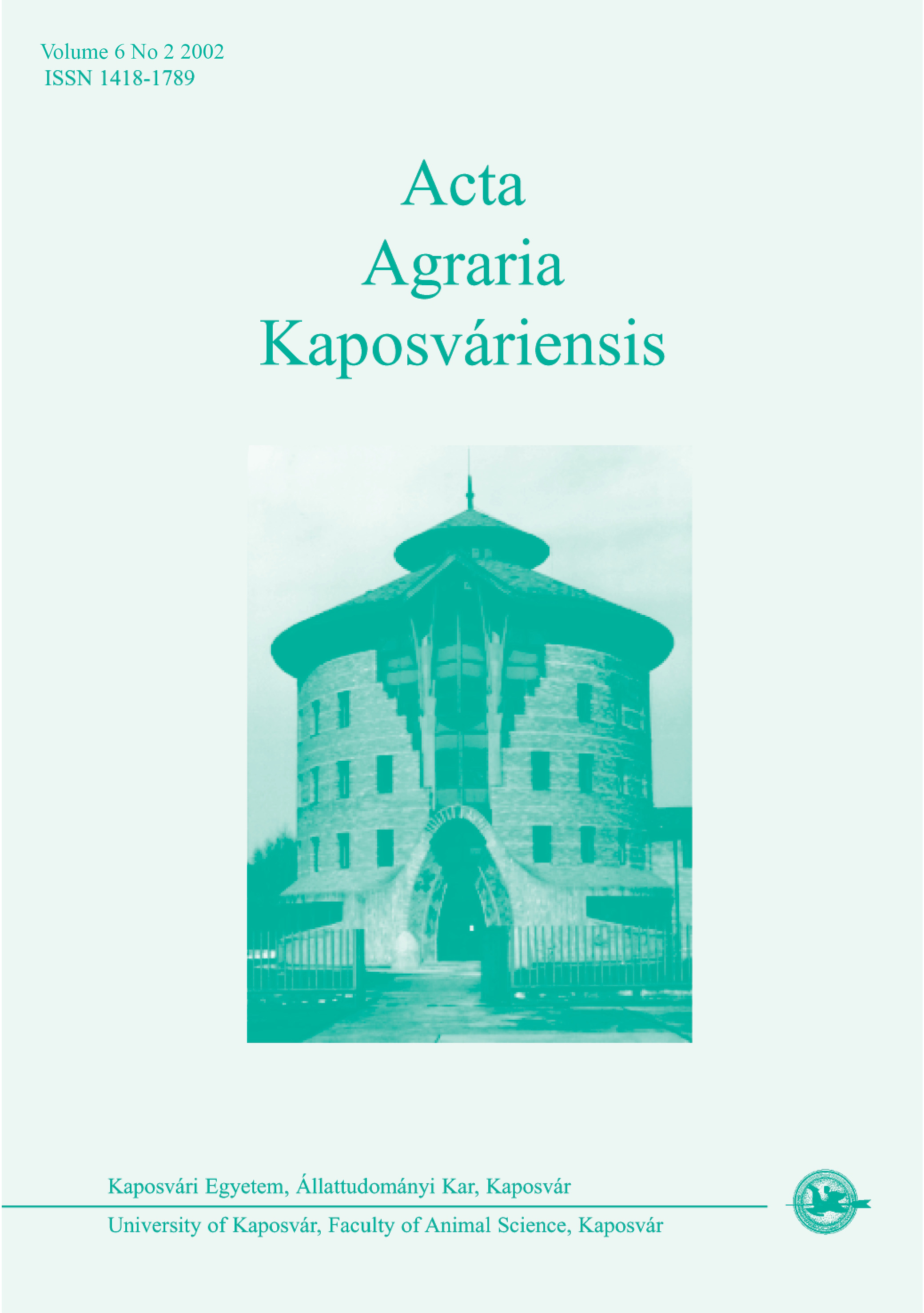Pathological changes in organs of clinically healthy Turopolje breed hogs
Kulcsszavak:
histopathological changes, organs, turopolje breed pigsAbsztrakt
Histopathological examination of organs of four autochthonous Turopolje breed hogs kept outdoors showed changes in cardiac and skeletal muscles, liver and lungs. In all four cases cardiac muscle fibers showed homogenization and fragmentation with medium to strong perymisium activation, indicating the chronic nature of dystrophic changes, as well as an attempt of tissue reparation. Between individual muscle bundles an empty space was noticed, indicating transudation from generally thickened blood vessel walls. This state can be described as edema, except for the similar, but reticulated spaces in two cases, which were described as fat deposition in cardiac muscle. Similarly, skeleton muscle showed homogenization and fragmentation with the loss of bands of skeletal muscle, perimysium multiplication and proliferation of connective tissue fibers. Blood vessel walls in skeletal muscles grew extremely thick. In both, cardiac and skeletal muscles numerous sarcocysts of various sizes were found. Described states are of hyaline-waxy type of degeneration, with attempts of regeneration and reparation. Degenerative conditions are consequences of microelement Selenium and vitamin E deficiency. Described changes in cardiac muscle are described as cardiopathy, which together with the changes on skeletal muscle could be described as systemic myopathy. Lungs of two animals showed chronic hyperplastic bronchitis, peribronchitis and emphysema, together with some areas of lung atelectasis. In both cases the parasite sections were noticed. In two cases liver showed hydropic vacuolar changes in hepatocytes. In liver interstitium there were some mononuclear cell infiltrative proliferation rich in eosinophyles. In one case there was a well-defined nodular mononuclear lymphoid cell formation, with lymphoid cells of varying size, but without specific structure. That resembles lymphodenoid hyperplasia. All the changes described above indicate that Turopolje pigs kept outdoors, although clinically healthy, are under the burden of chronic dystrophic reparation and regeneration processes of possible nutritional deficiency stress, bacterial infections and parasitic invasions.
Hivatkozások
Carlsten, J., Bjurstrom, S., Haggendal J., Jonsson, L. (1994). Reduction of heart Lesion after Experimental Restraint Stress: a Study in Stress-susceptible Pigs. J. of Vet. Med., 10. 722–730. https://doi.org/10.1111/j.1439-0442.1994.tb00142.x
Čuljak, K. (2001). Kratak osvrt na tzv. uslovnu patologiju u intenzivnom uzgoju svinja.»Sano». Savjetovanje «Briga za čovjeka, životinje i životnu sredinu». Novi Sad, 17. 5.
Disease of Swine (1999). 8 edition Iowa State University Press, Ames, Iowa, 50014.
Forenbacher, S.(1984). Sustavne miopatije i miokardiopatije u domaćih životinja uključivši i svinju. Prax.Vet., 32. 133–137.
Grant, C.A. (1961). Morphological and aetiological studies of dietetic microangiopathy in pigs («mulberry heart»). Acta Vet. Scand., 2(Suppl. 3)
Grabarević, Ž. (1986). Patohistološka opažanja u skeletnoj muskulaturi odbijene prasadi. Magistarski rad.Veterinarski fakultet, Zagreb.
Katić, R., Miljković, V., Stamenković, S., Šibalić, S., Cvetković Lj. (1967). Bolesti ovaca, Beograd , OZID.
Patterson, D. S. P., Allen W. M. (1972). Biochemical aspects of some pig muscle disorders. Br. Vet. J., 128(2), 101–110. https://doi.org/10.1016/S0007-1935(17)37138-5
Reetz, J., Bergman, V. (1984). Licht und elektronenmikroskopische Befunde an intra-muralen Koronararterien von Schlachtschweinen. Arch. Exper. Vet., 38. 469–481.
Schvarz, K., Foltz, V. (1957). Selenium as an integral part of Factor 3 against dietary necrotic liver degeneration. J. Amer. Chem. Soc., 79(12), 3292–3293. https://doi.org/10.1021/ja01569a087
Thompson, J. N., Scott, M. L. (1969). Role of selenium in the nutrition of the chick. J. Nutr., 97(3), 335–342. https://doi.org/10.1093/jn/97.3.335
Van Vleet, J. F., Ruth, G., Ferrans, V. J. (1976). Ultrastructural alterations in skeletal muscle of pigs with selenium-vitamin E deficiency. Am. J. Vet. Res., 37. 911–922. https://doi.org/10.2460/ajvr.1976.37.08.911
Letöltések
Megjelent
Folyóirat szám
Rovat
License
Copyright (c) 2002 Ruža Sabočanec, Domagoj Djiklič, Križan Čuljak, Mirna Robić, Antun Kostelić, Ivan Jurić, Ivica Jerković, Marija Đikić

This work is licensed under a Creative Commons Attribution-NonCommercial-NoDerivatives 4.0 International License.






